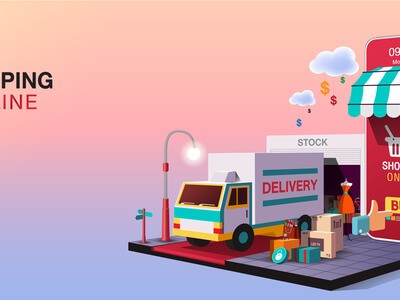How Do You Start an Online Sales Business?
There are dozens of web building programs dedicated to helping would-be entrepreneurs create an online store. But opening an online store involves much more than the website. You need to create your business plan and make sure that you have the tools and know-how to follow through.
The SlotoCash online casino real money gaming site has created a step-by-step plan that will take you through the process of setting up an online sales business in a way that ensures that you’ll have the best chance of success.
Online Sales
Prior to the pandemic, online sales were recording a healthy increase. In 2018 over 80% of business owners said that they were experiencing significant revenue growth from online sales and more and more small businesses were establishing online websites to sell their goods and services. Online sales were growing at a respectable 15% year-on-year.
That changed in 2020 when the pandemic caused a huge part of the economy to move online. Online sales increased 44.0% over 2019, the highest annual ecommerce growth in at least 20 years. The upward trajectory has continued with figures from Q1 of 2021 showing that online sales accounted for 13.6% of total sales.
That doesn’t mean that anyone with a computer and a product can set up an online store. But if you have a product that you believe that people will want to buy, knowledge about that product and some marketing strategies, you can open up a shop online and run your own online shop.
Business Strategy
Establishing your business strategy is the first step towards working towards success. Rather than wasting time you’ll save time in the end and ensure that you stay on track by outlining your goals from the get-go.
Once you decide what you’re selling, you need to decide whether you’ll have your products stocked on-site or you’ll be dropshipping. If you plan to dropship you order the merchandise after the customer has made the purchase from your store and your relationship with the manufacturer is that you pay the manufacturer and the manufacturer ships the item to the customer. If you’ll be doing the shipping you will need to stock the products in bulk so you need space to do that.
Another option includes white labeling -- where you put your own logo on a product manufactured by a third-party manufacturer. There are also options for print-on-demand for customized products that are printed after the order has been placed, then shipped to the customer.
Each model has its own pros and cons so do your research before you select your business model.
Name
Think of a unique name that will make your product stand out. The name might not even have anything to do with your product but you can link it somehow -– Panda Socks, Sunset Desserts, Eternity Art Supplies, etc. Avoid names that are difficult to pronounce or hard to spell. If you think that there’s any chance that your business will grow beyond its current parameters, don’t choose a name that might limit its growth. For example, if you are selling your designs, don’t pick a name like “Patty’s Pillows” because one day you might want to add tablecloths to your line!
Since you’re planning to sell online, make sure that the name of your business can be made into a website – you can check whether the name of your website is available at GoDaddy.com (you can also use their domain name generator for ideas).
Target Audience
Research your target market and develop a plan to reach this audience.
Budget
Create a budget that takes into account your start up costs and the expenses that you expect to encounter as you work towards your first set of goals.
As you get started, keep track of your costs – web hosting, website builder, cost of goods and variable costs – packaging and raw materials that are essential operating costs.
Opposition
Look to see what your opposition is doing. It can give you ideas for how you might want to proceed.
Brand
Create a brand to set yourself apart from others. Develop a logo image and a description of your product that makes your brand stand out.
Store Builder
There are many types of store builders. You can make your own website with WordPress, Wix or Weebly (there are others too) and use their store-building tools or put your store on a site like eBay or Amazon. Shopify is a good site for selling fashion items and Esty is the platform that many people use to sell their crafts. Make sure that, whatever platform you use, you have the ability to accept payment through multiple mediums, can accept and post reviews and are able to get 24/7 service from the server/platform.
A blog is a helpful way to maintain a connection with your potential customers
Going with a big site like eBay or Amazon means that you have the potential to get wider exposure. On the other hand, these sites take a large percentage in service fees. So you need to consider your website very carefully before you get started. You might want to start with a large site and then branch out into building your own site.
Once you build your store, set up payment options and create shipping settings you’ll be ready to add your products and product descriptions to the shop. Don’t forget to create a clear return and refund policy so you’re covered for anything and everything.
Now, link the whole kit and caboodle to social media and get ready to sell.






